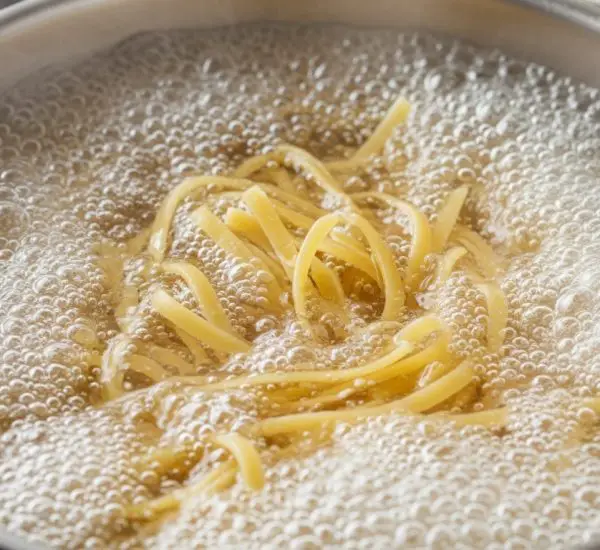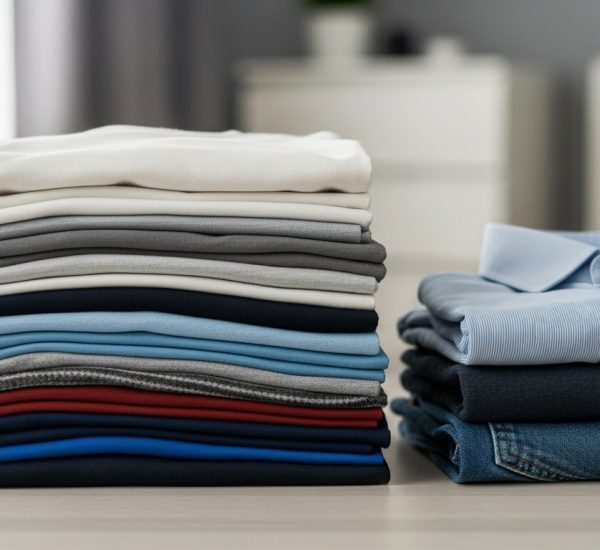Spaghetti is the most popular pasta shape in the world, loved by children and adults alike. Its simplicity, versatility, and ability to pair with almost any sauce have earned it a permanent place on tables everywhere. But if you have ever cooked spaghetti, you probably know the small dilemma that comes with it: how much pasta should you cook per person?
Many of us simply guess, tossing handfuls into boiling water, but this often leads to one of two problems — either you end up with too little pasta, leaving people unsatisfied, or you prepare far too much and waste food. In times when many families are trying to cut unnecessary costs and reduce waste, finding a way to measure pasta accurately without a kitchen scale becomes very useful. Luckily, there are several clever tricks that require no special tools, just items you already have at home.
The “OK” Finger Trick
One of the oldest and simplest ways to measure spaghetti without a scale is by using your fingers. The method is straightforward: form a circle with your index finger and thumb, as if making the “OK” gesture. The amount of spaghetti that fits into that circle is roughly equivalent to 90 grams — the average portion size for one person.
This trick is especially useful if you’re cooking for multiple people. Simply repeat the measurement as many times as needed for the number of portions. While the exact amount may vary slightly depending on the thickness of the spaghetti, this technique is reliable enough for everyday cooking and helps prevent waste.
The Bottle Cap Method
If you want a slightly more generous serving, the bottle cap trick works beautifully. Remove the cap from a standard plastic water bottle and use the diameter of the opening as your guide. The spaghetti that fits inside that circle measures about 100 grams — a hearty portion for one person.
This method is practical because water bottles are common in most households, and the cap provides a consistent size every time. In fact, many professional chefs admit to using this quick hack in their own kitchens. If you want to test its accuracy, you can later compare it against a scale, but most people find it surprisingly precise.
The Glass Cup Method for Short Pasta
Of course, not everyone wants spaghetti every day. If you switch to short pasta shapes like fusilli, penne, or rigatoni, you can still measure easily without a scale. A standard glass tumbler, the kind you might use for water at the dinner table, holds about 40 grams of dry pasta.
That means two glasses full will give you an average portion per person, enough for a filling plate. This technique is also handy if you’re cooking for a large group: instead of guessing, just count out the cups. It makes portioning fast, consistent, and avoids cooking an entire bag unnecessarily.
The Plastic Bottle Hack
Another creative solution involves using the neck of a plastic bottle. After unscrewing the cap, fill the bottle opening with spaghetti. The strands that fit inside, filling the circle completely, represent one serving. This method is similar to the cap trick but provides a slightly different measurement, depending on the bottle’s neck size.
To ensure accuracy, many people test this hack by weighing the portion once with a scale. Once confirmed, you can rely on it confidently every time you cook. What makes it especially convenient is that almost everyone has a plastic bottle available, making this a cost-free and reliable solution.
Modern Options: Using an App
For those who prefer technology, there are even smartphone apps that can help measure pasta. One of the most famous is iPasta, created by the Italian pasta company Barilla. Available on both Android and iPhone, the app provides not only a spaghetti-measuring tool but also recipes, cooking times, and shopping assistance.
This option appeals to younger or tech-savvy cooks who enjoy combining traditional cooking with modern tools. While it might seem excessive to use an app just to measure spaghetti, it can be a fun and informative way to make cooking easier.
Why Accurate Measurement Matters
Cooking the right amount of pasta is not just about avoiding hunger or overeating; it’s also about reducing waste. Food waste is a growing problem worldwide, and throwing away uneaten pasta after every meal may seem small but adds up over time. By using these simple tricks to portion correctly, families can save money and contribute to a more sustainable lifestyle.
Additionally, proper portioning ensures better cooking results. Overcrowding a pot with too much pasta can cause uneven cooking, stickiness, or clumping. On the other hand, too little pasta can make a meal feel incomplete. Accurate measurement strikes the balance between satisfaction and efficiency.
Italy’s Favorite Pasta Shapes
While spaghetti reigns as the most beloved pasta shape, surveys reveal that Italians also have a soft spot for other types. Penne rigate, fusilli, rigatoni, farfalle, linguine, bucatini, and lasagna sheets are all household favorites across the country.
Regional preferences also play a role. In Southern Italy, people often favor traditional shapes like orecchiette, ziti, ditalini, and mixed pasta varieties used in hearty soups. According to a survey conducted in May 2021 involving over a thousand participants (500 men and 500 women), 63% of Italians eat pasta for lunch, while the rest prefer it for dinner — usually in company.
This data confirms what the rest of the world already knows: pasta is more than just food in Italy; it is part of daily culture, tradition, and social life.
Final Thoughts
Measuring spaghetti without a scale doesn’t have to be complicated. Whether you prefer the finger circle method, the bottle cap trick, the tumbler cup for short pasta, or even a digital app, there are plenty of easy ways to avoid waste and cook just the right amount. These hacks are practical, quick, and cost nothing, making them perfect for any household.
So next time you stand by the stove wondering how much pasta to cook, remember: a simple hand gesture, a bottle cap, or even a plastic bottle can be your guide. With these tricks, you’ll always serve the perfect portion of spaghetti — no scale required.



